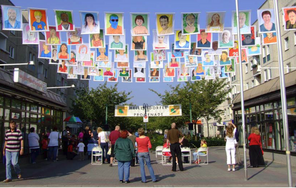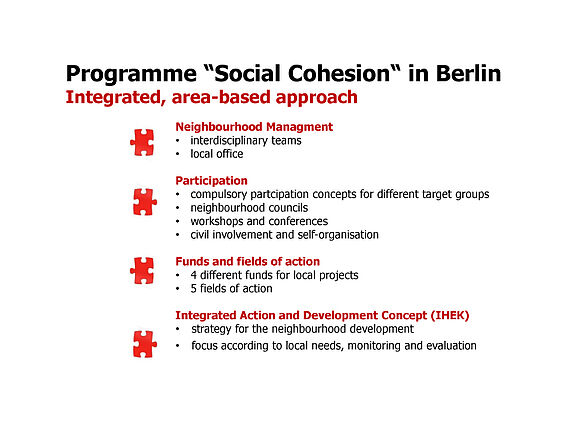
Berlin’s Neighbourhood Management (NM) programme is the capital city’s implementation of the national ‘Social Cohesion’ (until 2019 ‘Social City’) initiative. Both schemes aim to help disadvantaged inner city neighbourhoods and suburban neighbourhoods, promoting social cohesion through involving residents in decision-making processes affecting their local neighbourhood.
The NM programme achieves this by creating ‘Neighbourhood Councils’ for the neighbourhood participating in the programme. These councils give residents a “voice”, providing a platform for discussion and consultation, as well as enabling residents to participate in deciding how funds from the Social Cohesion programme should be used to fund local regeneration projects.

The programme aspires to put local residents ‘on the map’. Residents are recognised as ‘local experts’, as they have the best picture of the situation on the ground, knowing better than anyone, the problems their neighbourhood faces, as well as its potential. It also seeks to improve networking and communication within and among the local community, as well as with other stakeholders such as local authorities, community centres, religious organisations, and cultural associations.
In simple terms, the programme’s aim is to ensure that people can live together, rather than coexisting anonymously or even working against each other. The core of this initiative lies in helping people to help themselves, which means empowerment. Thus it is a process in which social capital helps to compensate for a lack of financial capital.
Besides the Neighbourhood Councils, the core of the NM is a local office with interdisciplinary teams in each of the 34 areas in Berlin assisted by the NM. The team organises the whole process of the programme at the local level. Because it is a local contact point, the team is building a bridge between inhabitants, institutions and the administration.
More information about the programme’s goals, the Neighbourhood Councils, the Neighbourhood Funds as well as determination, monitoring and anchoring.